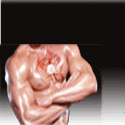So you want to blow away your golf buddies with your top-notch golf game. Well you gotta start with two key points for ripping your drives down the fairway.
The first element of your golf drive you'll want to master is distance. Accuracy is the second key element for improving your drive.
Here's seven top tips for driving that golf ball more accurately and farther down the fairway.
Tip one: Let the driver work for you. Golf clubs are designed to help you hit the ball with precision and force. Why wouldn't you take advantage of that. Yet, most new golfers believe they'll hit the drive farther by hitting the ball as hard as they can. A key point for experienced and beginning golfers is to not worry about the power of your swing. Aim your attention on striking the center of the ball with a fluid swing. This allows the body to perform a more natural swing, which will allow your driver to do its thing.
Tip two: Visualize the swing. Gain confidence in executing the shot by visualizing the ball heading straight as an arrow down the course as you make a couple of practice swings. Focus on achieving a steady, smooth swing. Play the shot over in your head first You'll gain confidence before actually striking the ball.
Tip three: Shorten your backswing. You should get better results from shortening your backswing, than going for the big hit. A good rule of measure is about a three-quarter length backswing; turning your body and bending your wrists naturally. Taking your backswing too far back actually gives you less control, which ends up with more missed shots.
Tip four: Keep your swing foot on the ground. Many golfers haven't been taught the correct positioning of their anchor foot. For right-handed golfers, your anchor foot is your right foot, and for left-handed golfers, your left foot acts as your anchor foot. When driving the ball, you want to be sure to not lift that foot too early during your golf swing. By holding this key foot down through more of the swing, you'll achieve increased thrust. The next time you watch a pro like Tiger Woods hit the ball, notice how long he keeps his anchor foot on the ground.
Tip five: Don't forget about your arms. A lot of times, most of the emphasis is placed on your feet position, or trunk stability. We forget about the role the arms play in your swing. To improve consistency in your drive, try this tip. Swing the club as you normally would by going into your backswing, and then following through with the forward swing. Don't stop there though. Go into your backswing, and forward again with the club. Swing the club like this; back-and-forth about 10 times. Practicing this exercise will consistently increase your accuracy.
Tip six: Swing with a shirt on your club. This is a special technique taught by numerous golf instructors. Hanging a shirt on your club helps you slow down your swing. Swinging the driver too fast is probably the number one cause for slicing or hooking the ball. Swing as you normally would with a natural fluid motion. Combine this with Tip number one, and you should notice a difference in the distance you hit after only a few weeks.
Tip seven: Lower your swing gradually. Trying to hit the golf ball the same way you swing a baseball bat won't work, but gradually lowering your swing will help increase distance. Take your driver and start by practicing some slow baseball type swings. The swing of the club should be just above the waist as if you were hitting a baseball. Keep increasing the swing, faster and faster until you feel as if you could hit a ball into the grandstands. Then slowly lower the height of that swing until the head of the club is just touching the ground. Practice this technique, and you'll be sure see improvement quickly.
And remember the most important thing about these golf driving tips. None of them will work if you don't practice, and then practice some more. Golfing is relaxing and helps keep you healthy. Have fun impressing your golf buddies as you whack that ball farther and more accurately on your next trip to the links.













